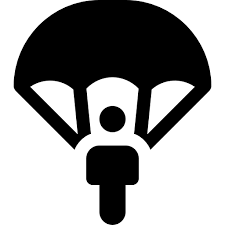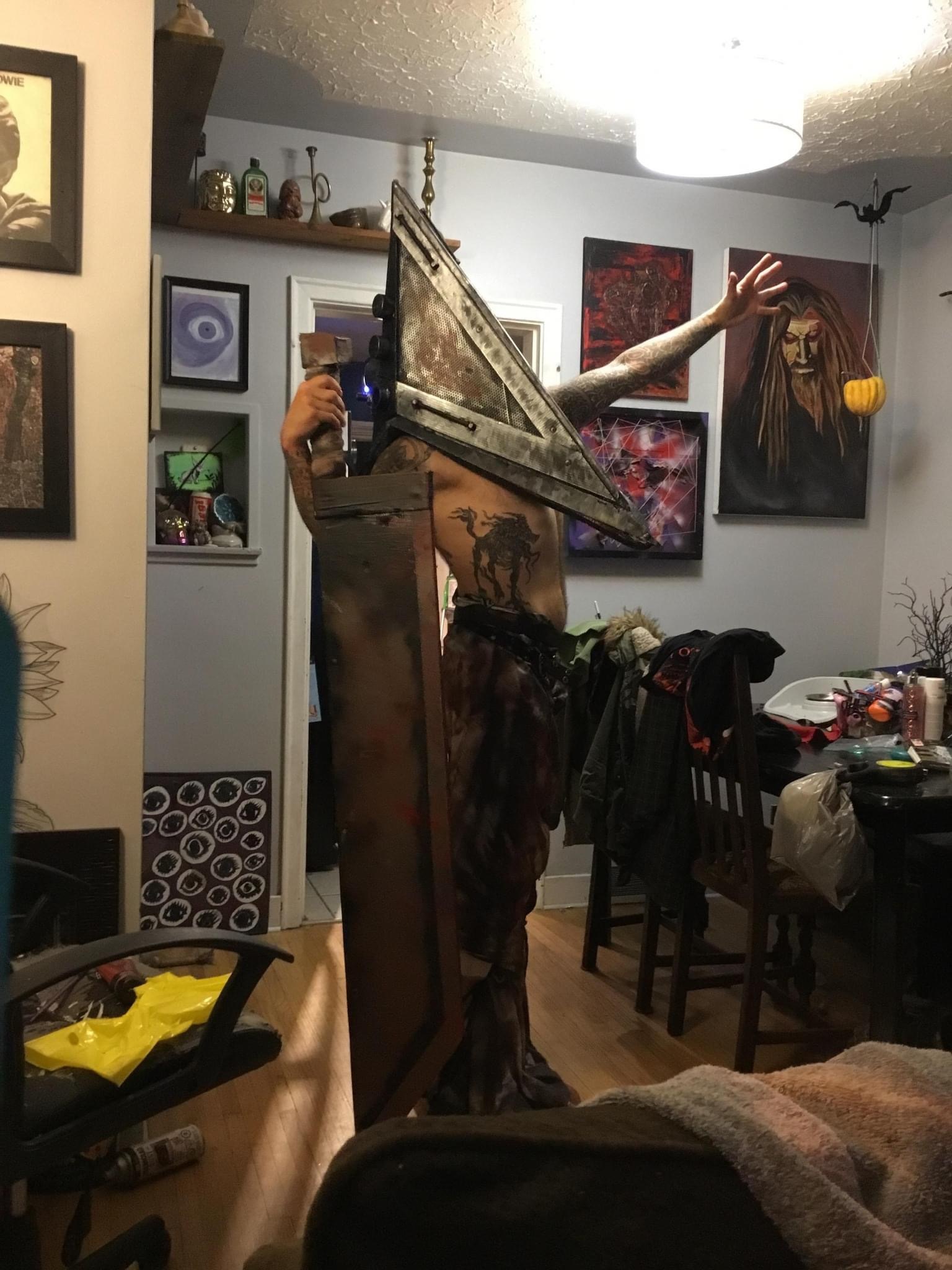Maybe something you learned the hard way, or something you found out right before making a huge mistake.
E.g., for audiophiles: don’t buy subwoofers from speaker companies, and don’t buy speakers from subwoofer companies.
For camping, in cold weather switching from being active to resting can be miserably cold. To combat this you can fill a heat tolerant water bottle with some boiled water, wrap it in a shirt or sweater to prevent burning, and put it into your sleeping bag to warm it up quickly. You can also sort of do the reverse for when you wake up. You can put your clothes for the next day in a small bag and sleep with them in your sleeping bag. That way they won’t be frigid when you’re trying to dress.
I used to drag my clothes into bed with me in winter when I was a kid. No central heating, no double glazing, no insulation, no carpets. Might as well have been living in a tent.
To combat this you can fill a heat tolerant water bottle with some boiled water, wrap it in a shirt or sweater to prevent burning, and put it into your sleeping bag to warm it up quickly.
The first time I did this I ended up so hot that I had to take it out. Its a wonderful trick and I have woken up spooning the cool water bottle in the morning
I have an old school got water bottle that I use like this… In my house.
Better yet understand that none of your gear makes heat, you do. Think of your sleeping bag and clothes as batteries that need to be recharged periodically and your body is a generator. When you shiver that is your body trying to burn calories to produce heat. You can stay much warmer by keeping busy and moving around than you will by standing around a fire. When you wake up cold in the middle of the night, move your legs like you’re riding a bicycle while laying on your side. It won’t take long to warm up. Also keep an isolating layer between you and the ground like a foam sleeping pad. It also works for when standing on frozen ground.
Ancient coins (2000-1700 years old) are surprisingly common and can be had very cheaply unless you want a specifically rare or perfect one.
I went through most of my life believing that anything older than say 200 years was automatically a museum piece or equivalent. But most museums of ancient history who display ancient coins have multitudes of the displayed coins sitting in storage. The Romans alone minted BILLIONS of coins over the span of the Republic and the Empire (that’s over 1000 years of history!) and if even 1% of them survive today, that’s still many, many dozens of millions.
Also America’s definition of old and Europe definition of old are very different. My family in England live in a house that’s older than America and not by a little.
Cool!!!
Where would someone start to look for affordable ancient coins and also are fakes common?
Yeah, Im curious about that too
I could use one to impress the ladies. Chics dig ancient roman coins right? Theyre gonna think im such a baller.
V-coins and ma-shops are reputable and you won’t easily come across fakes there. Just stay away from Ebay and the like. Also, if you go for the affordable types (common denari or late roman bronzes) these are almost never faked since it’s not worth the effort. They cost like 5 bucks for decent pieces, maybe just a bit more if you want a nicer specimen.
Servers: it doesn’t have to be built for the purpose. In a pinch, any PC will do.
Chess: Fried liver attack doesn’t work above 700 ELO and is easily countered with a possibility for a smothered mate.
Guitar: Playing 5 minutes every day is better than playing an hour once a week.
These are great and the guitar one is relevant to me right now. Thanks for answering!
Being a DM is not about telling YOUR story, it’s about coming together with your players to create a story. So even if you are going off a pre-written campaign or story you created, you are incharge of the story. Let the rule of fun reign. If a battle is taking forever you can cut down the number of enemies or the enemy’s abilities. Your in charge and if done right your players don’t even know.
Thanks to the internet you also don’t even need much. Get your hands on a core book and a dice set used by all is all that you need to play. Sure maps and miniatures are fun but some systems don’t need them, some players are perfectly fine with the theatre of the mind play, or some small toys on a self drawn grid on sheet paper can work.
Sure maps and miniatures are fun but some systems don’t need them, some players are perfectly fine with the theatre of the mind play, or some small toys on a self drawn grid on sheet paper can work.
Some big streamers have done massive damage to she hobby by bringing the image that map and miniatures are necessary, and not at best a nice to have, at worst a distraction.
Sure I use sometimes a sketch on paper, but very rarely miniatures, and never accurate ones. Role-playing game isn’t about miniatures
Role-playing game isn’t about miniatures
I feel like miniatures is a separate and interrelated hobby. I don’t really enjoy it but its nice to have something physical for combat. That being said free VTTs do so to replace the need for that.
Best miniature I ever used was a thread spindle he was cloth knight cleric. So I 100% agree with this.
The best way to write a good story, for me, is to write a story I want to read. That seems obvious but bear with me. If I plan out all the details, it’s like someone spoiled the book for me, I just can’t get into it. I have to create characters I’m interested, plunk them in a situation, and just start seeing what happens. I dont fret the little details unless they start getting me into a place I’m not enjoying. Later on I go back to the early parts and tie them together with whatever happened. Done this way, writing a story feels like reading a story, one that is specifically tailored to your own interests (and that none of your friends have read, so they can’t talk to you about it)
Woodworking
Measure twice cut once is rookie numbers. Measure 10 times, cut a test piece 5 times, measure twice after each, then do your real cut.
This is a bit of an exaggeration, but you get the idea.
Also, measure after each operation to check your work as you go so you can spot mistakes as early as possible. This includes checking for square, doing test fits, and all manner of sanity checks to ensure that your operations are achieving the desired results before you repeat them on other pieces or move on to do more work on those same pieces that may already be ruined or need fixing.
For glue up, always always always dry fit first. Then plan ahead. Put all your clamps on and have them adjusted before you add glue. Once the glue is on the time is short and you need to have everything ready and waiting.
If you use a table saw, take it seriously. Always use your riving knife when possible, be mindful of the control you have over the pieces, use push sticks and sleds and jigs to improve stability and safety, always wear ppe. Check that your blade is aligned to your miter slots and your fence. Having a slight relief angle on your fence can be good, but never have it canted towards the blade. That can be dangerous. Also make a crosscut sled, they’re amazing.
Beware of dust. It causes cancer and it lingers in the air. Wear a respirator and use ventilation when possible.
Make or buy a workbench with a vise and some hold down capabilities. Being able to hold your work easily is a huge benefit.
If you are looking to improve your accuracy and precision, buy a nice hand plane and learn how set it up, sharpen it, and how to use it. They are absolute game changers. Also make or buy a shooting board for it. Also, buy a machinist’s square, a set of feeler gauges, and a nice 36in aluminum straight edge and learn to use them.
Etc
Obviously that’s a lot, and a lot of it it depends on what you’re actually trying to do, but those are all things that have helped me a lot in my journey towards making furniture, picture frames, cutting boards, etc
My original plan was to ask for top 5 tips, so you went ways above the brief after you read my mind.
Lol, yeah I got a bit carried away there.
If you use a table saw, take it seriously.
I’d like to add: don’t wear gloves, especially ones that are a little to big for your hands.
I was going to add to tablesaw too. Safety is like security: use layers. Machines have switches and their own safeties. But you know what’s better? Put that behind another switch. And unplug it when you leave the room. You shouldn’t be able to turn it on until you are ready to use it. Again like security, it always pays to be a little paranoid
Another woodworker:
Huge +1 for a bench plane and a shooting board. Even in a mainly power tool shop, you can make things much more precisely square or mitered if you shoot them.
For marking cuts, use a knife not a pencil. When you use a pencil to mark your cuts, you limit yourself to guiding your tools with only your vision, not unlike a Tesla. When you score the line with a knife, you create a reference surface (one of the two sides of the cut, hopefully the one against your square) that has no thickness, and you can feel when a knife or chisel clicks against that surface. For saw cuts, you can use a chisel to pare away a little bit from the waste side to form a knife wall, which forms a little ramp that will guide a saw against your reference surface.
Wax literally everything. Wax your work surfaces, tablesaw top, jointer beds, planer bed, fences, plane soles, bikini lines, saw plates, screw threads…wax literally everything.
Learn how to do most common operations by hand. Square some rough lumber by hand with a bench plane. Chop a mortise with a chisel. Cut a tenon with a backsaw. Make dovetails by hand. Even if you’re a power tool woodworker and you’ve got a jointer and a thickness planer and a table saw and a rapidly growing number of routers, knowing how to do things by hand will help you understand just what it is you’re doing.
Do not suffer a dull tool to live. If your tool is getting dull, sharpen it. Sharpening is kinda personal, I think if cilantro tastes like soap to you you’ll prefer oilstones, if you have that tendon in your wrist you’ll like waterstones, if you can roll your tongue you’ll prefer diamond plates and if you have more money than god you’ll buy a Tormach. They’ll all sharpen a blade. Find the system you like and use it. If your tool is dull, sharpen it. Put it away sharp, don’t put it away dull.
Use your ears. You can tell a lot about what’s going on with a tool by listening to it.
Trumpet playing: The room you’re playing in really affects the sound you hear. So does your position in that room. If you are having weird issues with pieces you know you can play, try playing in the corner of the rooms, so your playing into the largest physical space possible.
Just buy a good 3d printer for your first. Sure, it’ll cost money, but the heartache of constant troubleshooting and tweaking can just suck the fun out of the hobby if you just need this print to succeed.
Prusa Mini+ (I think) Bambu A1 Mini (this would be my #1 starter printer before the security updates they done)
Good one. I struggled for years with a monoprice printer I basically got for free because Rakuten marketplace was shutting down and I had to use my rewards. I recently got a Bambu printer as a gift and it’s so much better at the same tasks, plus the additional features make me regret spending time upgrading my MP10.
One of those hobbies where starting cheap actually makes it not worth it. Kind of like a cheap camera can make you feel discouraged once you get pretty good at photography. A $500 camera can get you started, but a $1500+ (or refurbished more expensive option) will unlock a whole new level of creative abilities (speaking from experience!)
What would you say the gap between the “this 3d printer will do the job but make you lose your mind” and “this is a reliable 3d printer that is reasonably priced for hobbies”?
I kinda disagree with this, in certain contexts. There is some value in learning how the machine works by self-assembling a kit (or buying off-the-shelf parts and assembling from an open-hardware guide). Identifying the things that can be upgraded, tinkering with firmwares and nozzles, printing parts to upgrade the machine itself… all are a fun aspect of the hobby, if you’re interested in the hardware side.
But if you just want to make figurines from squirty plastic, then yeah just buy a moderately-priced, well-supported turnkey printer (though probably not a Bambu, because they’re sliding toward enshittification).
Great point! It also depends on how much time you have for it. I built a 3D printer when I was younger because I had hours most days to work on it.
Now I would probably only have a few hours a week to tinker, so if I spent most of that time just working on the printer and couldn’t get stuff actually printed and printed well, that would feel like wasted time personally!
Would be kinda cool to buy a functioning printer and print parts for a diy printer. Then it’ll have children haha!
But if you get a cheap one you get a free crash course on everything that could possibly go wrong on a print and how to avoid it.
Ender 3 btw
Don’t use thick lube for unresponsive yoyos and vice versa. Thick lube will make an unresponsive yoyo more responsive which you don’t want.
And don’t stress about playing a soulslike a certain way and don’t listen to gatekeeping haters. Play whatever way you want - it’s a game after all and you bought it for your pleasure
I was very concerned reading those first few words
:^]
Observing groups is a very useful skill, in minutes you can tell who’s where in the hierarchy, what the cliques are, how well they coordinate, how information flows, and where influence springs from.
This let’s you not only insert yourself at the right moment, peg, and place for maximum efficacy, but also informs you of barriers, challenges to overcome, and next steps for the group to act better together.
Hobby/skill/interest in Group dynamics, useful for coaching, creating community, project organisation, and group coaching.
This does seem like a very niche hobby.
Useful subskill I’d call it, I use it for scout mastering, organising (in nonprofits), adult training, team projects, event organisation, coaching and consulting both nonprofit and for work.
Get a heart rate sensor (wrist or chest) and train by heart rate. Most of your cardio should be heart rate zone 2 on the 5 zone scale. This builds your aerobic capacity with minimal damage and can be done almost indefinitely. Harder efforts do more damage and add recovery time so should be limited to about two a week.
If you’re going slow you’re doing it right, it will suck less, and you’re more likely to continue. Your slow speed will get faster over time.
How do I work out my personal heart rate zone boundaries?
Many apps will estimate them for you. The general formula for max heart rate is 220-age (if you’re 30, your max is probably around 190 bpm).
From there, the zones are usually calculated as % of max HR. Zone 5 is 90-100, 4 is 80-90, 3 is 70-80, 2 is 60-70, 1 is 50-60.
For our 30yo above, zone 2 would be around 114-133 bpm. That will feel super slow but that is the point, this is something you could do for a while and it should account for about 80% of your total exercise time in a week.
Edit: if you determine through training that your max is different, adjust it accordingly.
I feel like if one wants to truly train based on heart rate, then I wouldn’t recommend going by an estimate like that, but just go out and do a workout designed to push the heart rate to its limit.
It’s a good starting point at least. Some folks are lower or higher. If you regularly exercise your max is probably higher than estimated. You can definitely test it with an all out workout such as Tabata intervals and use your real max. The formulas will get you close enough until you’ve tested it. You will also find different max HR for different sports; I found I can get an extra 2bpm running vs cycling, either because biking uses fewer muscles or because I was better at it that running.
If you regularly exercise your max is probably higher than estimated.
I was under the impression that the maximum heart rate is something that can not be trained. This source suggests that if anything training regularly would lower a persons max heart rate.
I just think that either one is serious enough about trying to optimize ones training efficiency, at which point the formula wouldn’t be accurate enough for me. Or one takes a more causal approach at which point doing most runs at “conversational pace” is a good enough rule of thumb.
I have read sources in the past that suggest endurance exercise can slow the decline in max HR. If I find them again I will share here.
In my own experience, I have not lost a single bpm in a decade of tracking.
Generally agree, but the breakdown should be 80/20, 80% easy and 20% hard. It’ll be real difficult to get faster without the 20% hard.
In Magic the Gathering it’s usually correct to wait to play instant spells until your opponent’s turn, either on their upkeep or end step in most cases. Waiting as long as you can gives you more information to make the best play.
I learned the hard way when jogging and meeting some friends at the bar that even if it’s plus 20 you should bring a sweater with you, because once you’re done jogging and it gets dark you will be cold from the sweat. I did this one time and everyone else in the bar was just fine with their T shirts and I was SHIVERING with my wife beater on. Kind of embarrassing.
For Rpg : let the player take the initiative and bring their plot to the table. If they preptge game for you, it’s les work as aGM (also no doodle scheduling, use fix dates)
For paragliding : if there is nobody on a flight site do not take off. Most likely you misunderstood something, and the site isn’t flyable. Sure if you re very experienced, do hike and fly or do fly on a week day on a small site, it may not apply, but you’re able to analyse by yourself
If you ever start playing Warhammer 40k the miniature game and plan on building your own miniatures use magnets on the weapons. A lot of models come with 2 or 3 different weapons that are good for different situations IE better anti tank, fly, infantry ect. Instead of buying the same model 3 times building and painting it you can buy one, attach small magnets to the weapons and the part of the body they attach to, then you can switch them out on the fly. I didn’t do that when I started and it gave me a lot of issues with some of the armies I played against.










